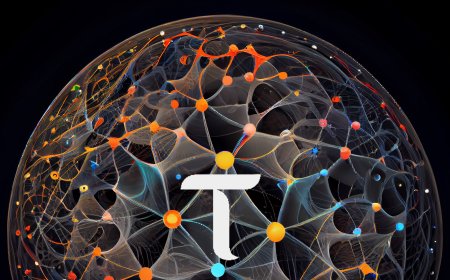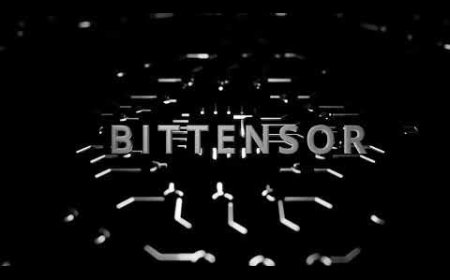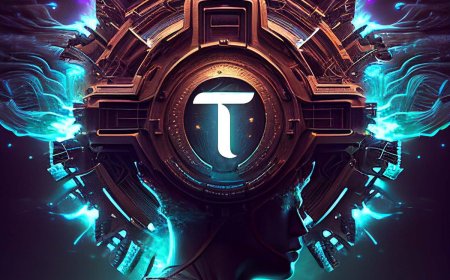Compute Horde: Revolutionizing Decentralized Computing in the Bittensor Network
In the ever-evolving landscape of decentralized technologies, Compute Horde (subnet 12) emerges as a groundbreaking infrastructure layer within the Bittensor network. This innovative subnet aims to provide cost-effective, scalable, and secure computing resources for various applications, particularly in the realm of AI and machine learning. In this comprehensive overview, we'll delve into the intricacies of Compute Horde, its unique features, challenges, and potential impact on the future of decentralized computing.
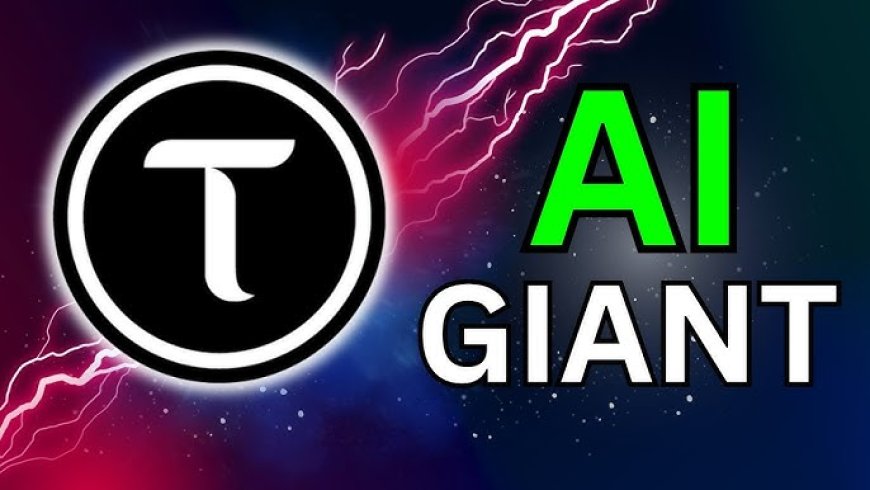
Understanding Compute Horde
Compute Horde, also known as subnet 12 in the Bittensor ecosystem, is not a traditional service subnet. Instead, it functions as an infrastructure layer, offering computing resources that can be utilized to build and run various applications. Unlike subnets that provide specific services (e.g., subnet 17 for 3D model generation), Compute Horde focuses on providing the underlying computational power necessary for diverse tasks.
Key Components of the Compute Horde Ecosystem:
- Validators: Responsible for verifying the work of miners and distributing tasks.
- Miners: Provide the actual computing resources (GPUs) to the network.
- Facilitators: Act as intermediaries between users and the subnet, handling job submissions and results retrieval.
- Users: Submit computing jobs to be processed on the network.
The Compute Horde Architecture
The subnet's architecture is designed to ensure efficiency, security, and scalability:
- User Interaction: Users interact with facilitators to submit jobs and retrieve results. This separation allows for a more user-friendly interface while maintaining the security of the underlying network.
- Facilitator Role: Facilitators manage job submissions, handle data storage, and communicate with validators. They serve as a crucial bridge between the user-facing side and the core network operations.
- Validator Functions: Validators select miners, distribute tasks, and verify work. They play a critical role in maintaining the integrity of the network and ensuring fair distribution of resources.
- Miner Operations: Miners execute jobs using Docker containers, ensuring isolation and security. This containerization approach allows for flexible and secure execution of diverse workloads.
Job Execution Process:
- Users submit jobs to facilitators through a user-friendly interface.
- Facilitators communicate with validators, relaying job requirements and specifications.
- Validators select appropriate miners based on availability, capability, and fairness algorithms.
- Miners download necessary Docker containers and input data from secure storage locations.
- Jobs are executed on miners' hardware, leveraging the power of distributed GPUs.
- Results are returned through the chain: miner > validator > facilitator > user, ensuring data integrity and security throughout the process.
Verification and Security Measures
One of the most critical aspects of Compute Horde is its robust verification system, designed to ensure the integrity of computations and prevent fraudulent behavior:
- Hashcat Challenges: Validators regularly send hashcat challenges to miners to verify their GPU capabilities. These challenges serve as a benchmark for GPU performance and help detect any discrepancies in reported vs. actual hardware capabilities.
- Receipt System: Miners provide signed receipts for completed jobs, which are stored and can be audited by validators. This creates a transparent and verifiable record of work performed on the network.
- Load Balancing: Validators are required to distribute work evenly among miners to prevent collusion. This mechanism ensures fair participation and reduces the risk of centralization within the network.
- Cross-Subnet Verification: Partnerships with other subnets (e.g., subnet 17) provide additional verification mechanisms. This inter-subnet collaboration enhances the overall security and reliability of the Bittensor ecosystem.
- Dynamic Verification Strategies: The network is designed to adapt its verification methods continuously, making it increasingly difficult for malicious actors to game the system.
Challenges and Solutions:
- Deterministic vs. Non-deterministic Jobs: Addressing the verification of non-deterministic computations poses a significant challenge. The network is exploring various approaches, including statistical sampling and reputation systems, to handle these cases effectively.
- Cheating Prevention: Implementing strategies to discourage and detect fraudulent behavior by miners is an ongoing process. This includes advanced monitoring techniques, economic incentives, and potential slashing mechanisms for proven bad actors.
- Resource Allocation: Balancing immediate availability with cost-effectiveness in GPU provisioning requires careful optimization. The network aims to provide both on-demand resources for time-sensitive tasks and more cost-effective options for less urgent computations.
- Scalability: As the network grows, ensuring efficient task distribution and result verification across a large number of nodes becomes increasingly complex. Ongoing research focuses on optimizing these processes for large-scale operations.
GPU Utilization and Network Growth
Compute Horde has seen impressive growth in GPU resources, reflecting the increasing demand for decentralized computing power:
- Current GPU count: Approximately 574 (as of the latest update)
- Daily growth: 50-70 GPUs added per day
- Dominant GPU model: NVIDIA A6000, chosen for its optimal cost-performance ratio
The subnet incentivizes miners to provide high-performance GPUs, leading to a competitive environment where more efficient hardware pushes out less cost-effective solutions. This natural selection process ensures that the network continually evolves to offer cutting-edge performance.
Future plans include introducing new hardware classes to support models requiring larger VRAM (e.g., 80GB cards for large language models), further expanding the network's capabilities and use cases.
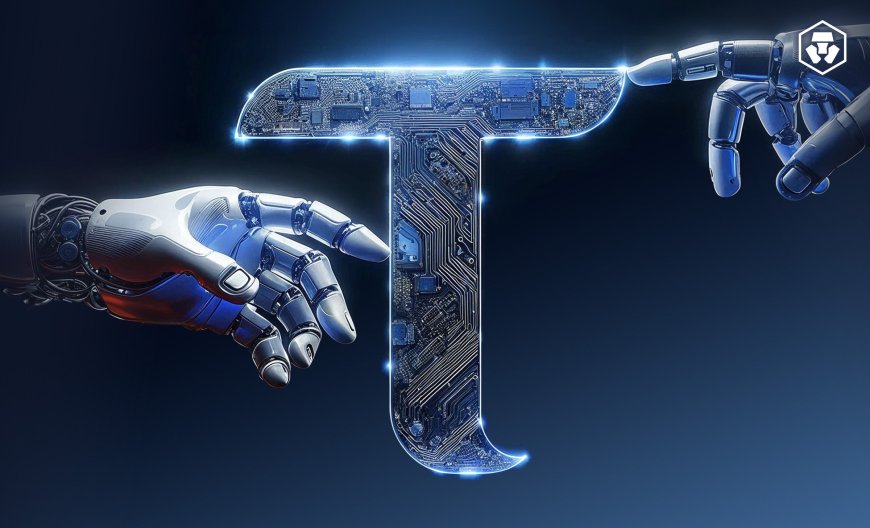
Monetization and Market Dynamics
Compute Horde is positioning itself as a cost-effective alternative to traditional cloud computing services, leveraging the unique advantages of blockchain technology:
- Free Tier: Currently, users can run jobs for free, subject to queue times and available resources. This strategy aims to attract early adopters and demonstrate the network's capabilities.
- Future Pricing Model: Plans to introduce a pricing system that remains competitive with traditional cloud providers while leveraging blockchain subsidies. This model aims to offer significant cost savings to users while ensuring sustainable rewards for miners and validators.
- Validator Earnings: Validators can monetize their allocated resources, potentially sharing earnings with facilitators. This creates a multi-tiered economic model that incentivizes participation at various levels of the network.
- Market-Driven Scaling: The number of GPUs and their utilization is expected to fluctuate based on Tao token price and subnet weights within the Bittensor network. This dynamic scaling ensures that the network can adapt to changing market conditions and demand.
- Flexible Resource Allocation: The network is designed to support both always-on resources for immediate availability and on-demand resources for cost-effective scaling during peak times.
Integration with Other Subnets
A key strength of Compute Horde is its potential for integration with other Bittensor subnets, creating a synergistic ecosystem of decentralized services:
- Subnet 17 Partnership: Collaboration to offload compute-intensive tasks from subnet 17 to Compute Horde. This partnership demonstrates the potential for specialization and cooperation within the Bittensor network.
- Verification Synergy: Using outputs from other subnets to verify the work done on Compute Horde. This cross-subnet verification enhances the overall security and reliability of computations.
- Ecosystem Growth: As more subnets join the Bittensor network, the demand for Compute Horde's resources is expected to increase. This growth potential positions Compute Horde as a critical infrastructure component for the entire ecosystem.
- Specialized Compute Services: Future integrations may include subnets dedicated to specific types of computation (e.g., machine learning training, video processing), further expanding the network's capabilities.
Facilitator Development and APIs
Compute Horde encourages the development of facilitators and APIs to enhance usability and create new services, fostering an ecosystem of innovation:
- Open-Source Facilitator: Plans to release a base facilitator code for validators to easily set up their own interfaces. This democratizes access to the network and encourages diverse application development.
- API Development: Opportunity for developers to create value-added services on top of Compute Horde's infrastructure. This could lead to a rich ecosystem of applications leveraging decentralized compute resources.
- AI Model Integration: Rapid deployment of Hugging Face models and other AI services through simple API wrappers. This feature positions Compute Horde as a go-to platform for AI researchers and developers.
- Custom Solutions: Facilitators can develop specialized interfaces and services tailored to specific industries or use cases, expanding the network's reach and utility.
Future Developments and Challenges
As Compute Horde continues to evolve, several key areas are being explored to enhance its capabilities and address potential challenges:
- Hardware Classes: Introduction of new hardware classes to support models requiring larger VRAM (e.g., 80GB cards for large language models). This expansion will enable the network to support cutting-edge AI research and development.
- Verification Improvements: Ongoing research into more robust verification methods, including potential "proof of VRAM" mechanisms. These advancements aim to further secure the network against potential exploits and ensure accurate resource reporting.
- Scaling Solutions: Addressing the increasing demand for GPU resources as the Bittensor network expands. This includes optimizing task distribution, result verification, and network communication to maintain efficiency at scale.
- Security Enhancements: Continuous improvement of anti-fraud measures and miner behavior monitoring. As the network grows, maintaining its integrity becomes increasingly critical.
- Energy Efficiency: Exploring ways to optimize energy consumption across the network, balancing performance with environmental considerations.
- Regulatory Compliance: Navigating potential regulatory challenges as the network grows and potentially handles sensitive or regulated workloads.
- User Experience Improvements: Developing more intuitive interfaces and tools to make the network accessible to a broader range of users, from individual researchers to large organizations.
Conclusion
Compute Horde represents a significant advancement in decentralized computing within the Bittensor ecosystem. By providing a scalable, cost-effective, and secure infrastructure layer, it enables the development of diverse applications and services. The subnet's innovative approach to resource allocation, verification, and inter-subnet collaboration positions it as a crucial component in the future of decentralized AI and machine learning.
As Compute Horde continues to grow and evolve, it faces both exciting opportunities and complex challenges. The ongoing development of verification methods, pricing models, and integration capabilities will be critical in determining its long-term success. For developers, miners, and users alike, Compute Horde offers a unique platform to engage with cutting-edge decentralized computing technologies.
The success of Compute Horde could pave the way for more efficient, accessible, and decentralized computing resources, potentially disrupting traditional cloud computing models and accelerating innovation in AI and machine learning fields. As the Bittensor network expands and more subnets come online, the role of Compute Horde as a foundational infrastructure layer is likely to become increasingly vital, driving forward the vision of a truly decentralized and democratized computing landscape.
The future of Compute Horde and similar decentralized computing platforms holds immense potential. As traditional centralized cloud services face challenges related to data privacy, censorship resistance, and monopolistic practices, decentralized alternatives like Compute Horde offer a promising solution. By leveraging the collective power of distributed GPUs and the security of blockchain technology, Compute Horde is poised to play a pivotal role in shaping the future of cloud computing, AI research, and decentralized applications.
As the project continues to mature, it will be crucial for the Compute Horde team and the broader Bittensor community to remain agile, addressing challenges as they arise and continuously innovating to stay ahead of the curve. The success of this ambitious project could mark a significant milestone in the journey towards a more open, accessible, and decentralized digital infrastructure, empowering researchers, developers, and businesses around the world with unprecedented computing capabilities.
Source : @Opentensor Foundation

